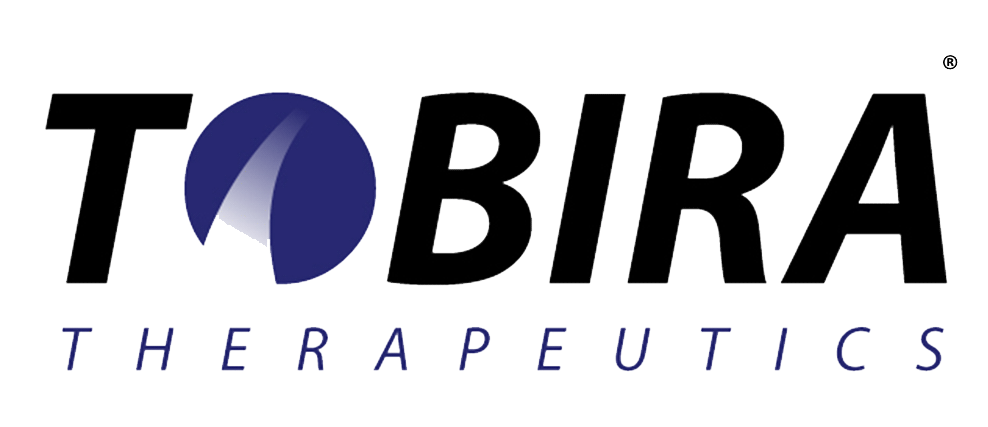
Tobira Therapeutics Announces Publication of Phase 1 Study Results Showing Cenicriviroc Safety in Cirrhotic Patients
Print 13 May 2016

SOUTH SAN FRANCISCO, Calif.,
"The results from this study are particularly relevant as we continue to explore the efficacy and safety of this dose of CVC in adults with NASH and liver fibrosis in the ongoing CENTAUR study, where over one-third of subjects had severe fibrosis at entry and are therefore at risk of progression to cirrhosis," said
The study evaluated the pharmacokinetics, pharmacodynamics and safety of CVC in participants with cirrhosis and mild or moderate hepatic impairment compared to healthy matched controls. Following once-daily administration of CVC 150 milligrams over 14 days, participants with mild hepatic impairment did not have increased exposures whereas those with moderate hepatic impairment had higher exposures (AUC0-t and Cmax increased by 55% and 29%, respectively). Exploratory analyses to evaluate pharmacodynamic effects of CVC on CCR2 and CCR5 ligands, proinflammatory cytokines and bacterial translocation biomarkers did not reveal any meaningful differences between participants with hepatic impairment and those with normal hepatic function. Furthermore, CVC was generally well tolerated, with adverse events consistent with its known safety profile.
CVC treatment resulted in rapid and reciprocal increases in the ligands CCL2 and CCL5, consistent with potent and sustained CCR2/CCR5 blockade across all treatment groups. Despite increases in CCL2 and CCL5, no significant effects on markers of hepatic inflammation or proinflammatory cytokines were observed over the 14-day treatment period.
Study Design
This Phase 1, open-label, non-randomized, single-center study was conducted in the
- participants with mild hepatic impairment and their matched controls with normal hepatic function ("matched controls (mild)");
- participants with moderate hepatic impairment and their matched controls with normal hepatic function ("matched controls (moderate)").
Both cohorts were conducted in parallel.
About Cenicriviroc (CVC) and Non-alcoholic Steatohepatitis (NASH)
CVC is an oral, once-daily, potent immunomodulator that blocks two chemokine receptors, CCR2 and CCR5, which are intricately involved in the inflammatory and fibrogenic pathways in NASH that cause liver damage and often lead to cirrhosis, liver cancer or liver failure. Tobira believes this novel approach will establish CVC as both a single-agent and as a cornerstone treatment in multi-therapy regimens for NASH, for which there is currently no approved drug.
CVC is currently being evaluated in Tobira's fully enrolled global Phase 2b CENTAUR study (identifier NCT02217475) and the company expects to announce the study's primary endpoint in the third quarter of 2016. CENTAUR is comparing CVC to placebo in 289 patients with NASH and liver fibrosis. CVC has been granted Fast Track status in patients with NASH and liver fibrosis, the patient population at highest risk of progression to cirrhosis. The CENTAUR study includes surrogate endpoints identified as suitable for registrational studies in findings of an FDA-AASLD workshop reported in Hepatology and in use in current Phase 3 studies. To date, over 600 subjects have been dosed in completed studies with CVC, including 115 HIV infected subjects on treatment for up to 48 weeks.
NASH is an emerging health crisis impacting 3% to 5% of the
About
Tobira is a clinical-stage biopharmaceutical company focused on the development and commercialization of therapies to treat liver disease, inflammation, fibrosis and HIV. The company's lead product candidate, cenicriviroc (CVC), is a first-in-class immunomodulator and dual inhibitor of CCR2 and CCR5 being evaluated for the treatment of non-alcoholic steatohepatitis (NASH), primary sclerosing cholangitis (PSC) and as an adjunctive therapy to standard of care in HIV. Tobira's pipeline also includes evogliptin, a selective DPP-4 inhibitor, which it plans to develop for NASH in combination with CVC. Learn more about Tobira at www.tobiratx.com.
Tobira® is a registered trademark owned by
©2016
Forward Looking Statements
This release contains forward-looking statements made pursuant to the safe harbor provisions of the Private Securities Litigation Reform Act of 1995. Forward-looking statements reflect management's current knowledge, assumptions, judgment and expectations regarding future performance or events. Although management believes that the expectations reflected in such statements are reasonable, they give no assurance that such expectations will prove to be correct and you should be aware that actual results could differ materially from those contained in the forward-looking statements. Forward-looking statements are subject to a number of risks and uncertainties including, but not limited to, the company's clinical development of cenicriviroc (CVC), the potential timing and outcomes of clinical studies of CVC undertaken now or in the future; the ability of the company to timely source adequate supply of its development products from third party manufacturers on whom the company depends; the company's limited cash reserves and its ability to obtain additional capital on acceptable terms, or at all; the company's ability to successfully progress, partner or complete further development of its programs; the uncertainties inherent in clinical testing; the timing, cost and uncertainty of obtaining regulatory approvals; the company's ability to protect its intellectual property; competition; changes in the regulatory landscape or the imposition of regulations that affect the company's products; and other factors listed under "Risk Factors" in the company's filings with the
All Portfolio
MEDIA CENTER
-
The RMI group has completed sertain projects
The RMI Group has exited from the capital of portfolio companies:
Marinus Pharmaceuticals, Inc.,
Syndax Pharmaceuticals, Inc.,
Atea Pharmaceuticals, Inc.

